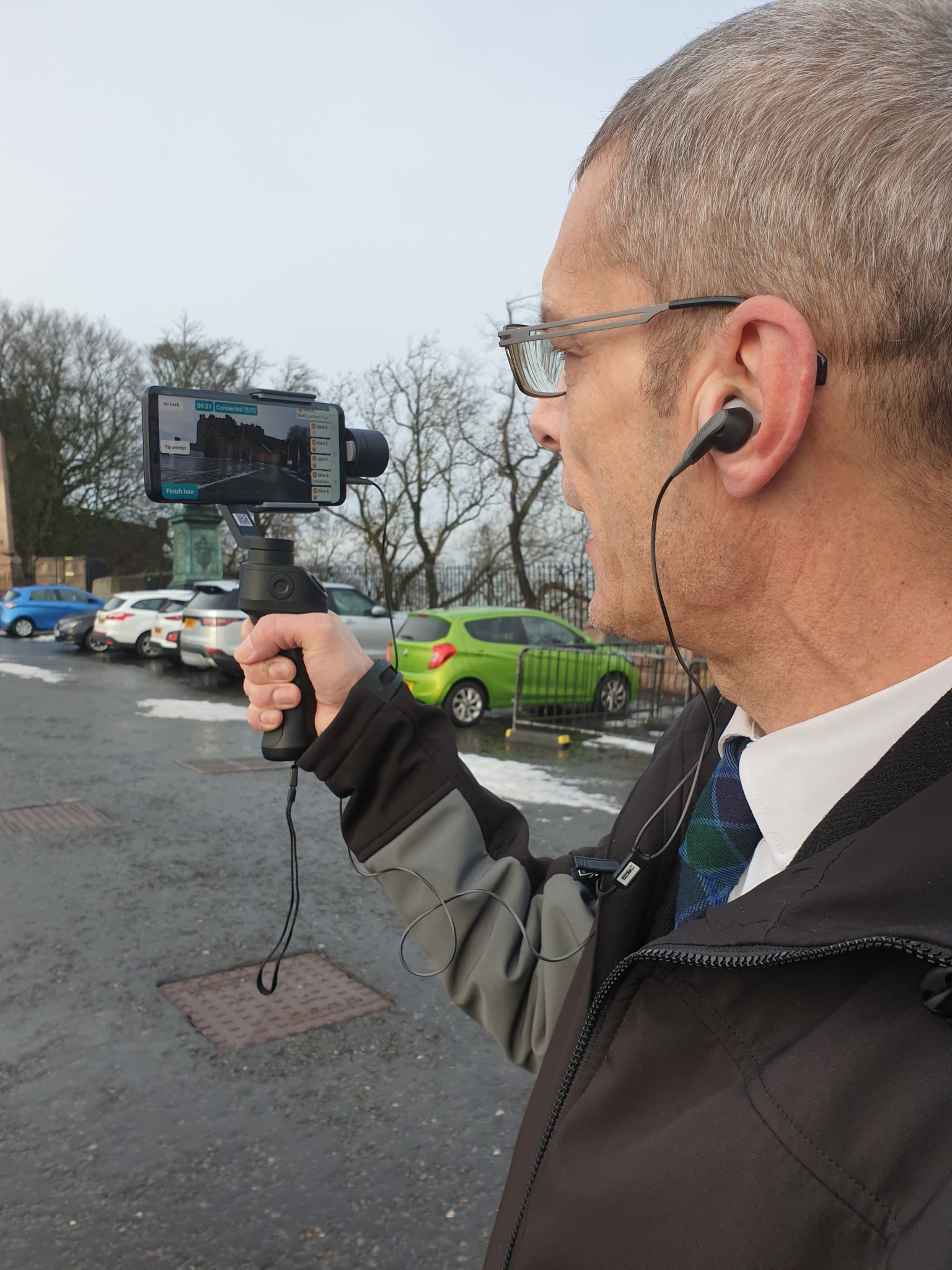Invisible Cities is a social enterprise that trains those who have experienced homelessness to become walking tour guides. NWR was delighted to take a tour of Edinburgh with Invisible Cities in April, and members can take several more tours with Invisible Cities over the coming months (book HERE). Invisible Cities have adjusted their in-person tours in response to COVID-19 restrictions to enable participants to ‘walk’ with their guides without the need to visit locations.

NWR Communications Coordinator, Helen Page shares her experience of a recent NWR Schedule of Talks Invisible Cities tour
Paul, our guide for the ‘Real Women of Edinburgh’ tour, artfully combined sharing historical facts and topical information, with humour – and holding a camera phone – as he escorted us through the streets of Scotland’s capital. He was friendly, informative and it would appear undaunted leading our tour group of over 400 women!
Our tour began at Maggie Dickson’s pub on Grassmarket, where Paul told us Maggie’s story of surviving a hanging following her conviction under the concealment of pregnancy act during the 1720s. She became a celebrated figure known as Half-Hangit Maggie.
For me, several of Paul’s stories triggered reflection on women’s treatment by the authorities and under the law, particularly that of Jessie King who was the last women executed in Edinburgh in 1889. Jessie was found guilty of murder, but now her conviction is considered unsafe by many.
Paul’s account of body snatchers, Helen Torrance and Jean Waldie’s actions, was shocking. The duo, who were convicted of murder and hanged in the 1750s, predate Burke and Hare’s activities.
We also heard about the medical pioneer and suffrage campaigner, Elsie Inglis, and, unbelievably, how her valiant work was not always welcomed.
As well as tales about Edinburgh’s women, Paul shared lots of facts about Edinburgh and its other residents. Before the tour, I hadn’t known Edinburgh Castle was the inspiration for The Wizard of Oz’s Emerald City. We were shown John Knox’s house and of course, visited the monument to Greyfriars Bobby.
No visit to Edinburgh and guide to its women inhabitants would be complete without reference to JK Rowling. The tour was peppered with mentions of buildings, locations and engravings that are understood to have influenced the Harry Potter books. Paul took us to The Elephant House café at George IV Bridge to see where Rowling spent time writing.
The tour also included an introduction to the Grassmarket Community Project which offers support to vulnerable people dealing with multiple complex issues, including homelessness, mental and physical health problems and substance abuse.
With the tour coming to an end at the bottom of the Royal Mile, unencumbered by traffic and seeing very few other ‘pedestrians’, it felt like a huge treat to ‘leave’ home under Paul’s guidance. It was a pleasure to meet him and hear his tales about Edinburgh and its women.
